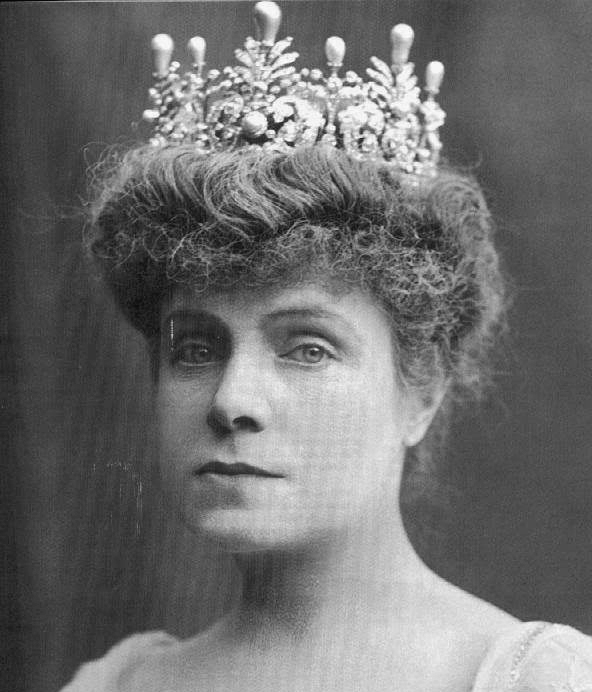 |
| Infanta Eulalia of Spain wears her diamond and pearl tiara |
We often discuss the sad fate of the jewels worn by the Romanovs, many of which were lost, sold, or dismantled after the Russian Revolution of 1917. But there was another European royal family that experienced major jewel losses in the twentieth century, and today’s tiara is one of those bejeweled casualties.
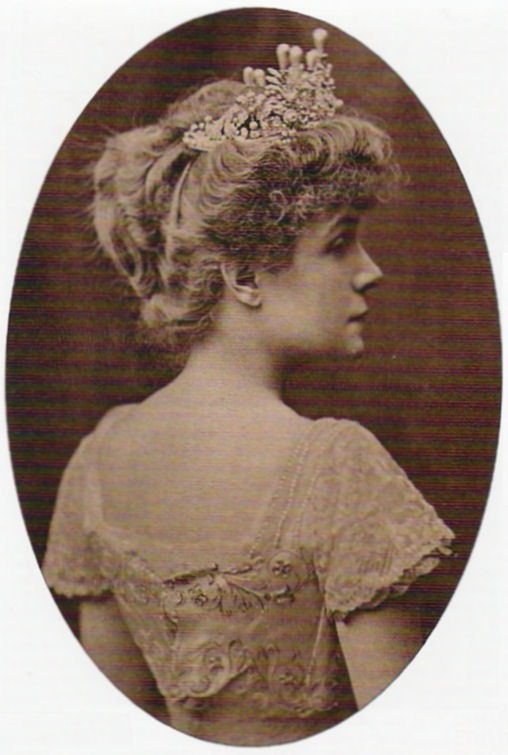 |
| Eulalia wears the tiara in a profile portrait |
The magnificent pearl and diamond tiara in question belonged to Infanta Eulalia of Spain. She was one of the daughters of Queen Isabella II of Spain, who reigned from 1833 (when she was only three years old) until she was deposed in 1868. Isabella’s husband was her double first cousin, the Duke of Cadiz; they had four children, including Eulalia, but there were whispers that the children were fathered by someone else.
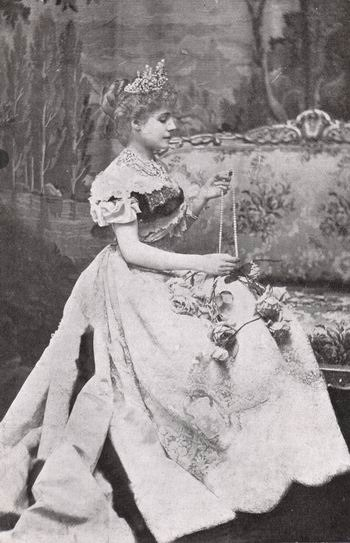 |
| Eulalia, wearing the tiara, plays with a string of pearls |
Eulalia was Isabella’s youngest child. She was only four years old when her mother was deposed and the family was exiled to Paris, where Eulalia was raised and educated. By 1874, though, the family’s fortunes shifted. The monarchy was restored, and Eulalia’s older brother was crowned King Alfonso XII. For Eulalia, this meant an end to her education and a move back to Spain. It also meant that she was once again a valuable part of a royal and political dynasty, and that meant one thing: an arranged marriage.
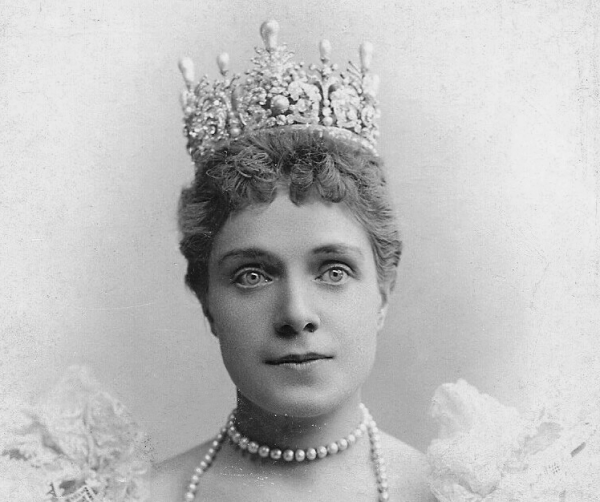 |
| Eulalia wears the tiara in a portrait |
The need for Eulalia to make a politically-beneficial match became immediate in November 1885, when King Alfonso XII died. His heir was his not-yet-born son, the future King Alfonso XIII. With the monarchy already in a precarious position — and an unborn fetus now the presumed king-in-waiting — the royal family and the government rushed to reinforce and consolidate power by marrying Eulalia to one of her royal cousins. She was still in mourning, writing in her 1915 memoir that Alfonso’s “death seemed like the end of my own life to me.” Although she “wanted to get away,” she knew that marriage was inevitable: “I could not get away unmarried. That was impossible.”
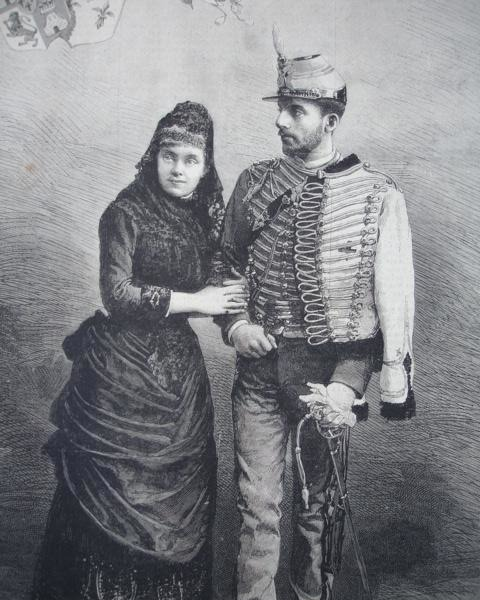 |
| Eulalia and Antonio in an illustrated portrait at the time of their engagement; note that Eulalia is in mourning for her brother, King Alfonso XII |
The chosen husband was the Duke of Galliera. Antonio was the son of Queen Isabella II’s sister, Infanta Luisa Fernanda. His elder sister, Mercedes, had been the first wife of Eulalia’s brother, the late King Alfonso XII. Antonio had been born in Spain, but like Eulalia, his immediate family had been forced into exile in France after the 1868 revolution. Now back in Spain, he and Eulalia had been informally engaged even before the king’s death. By December 1885, only a month after Alfonso’s death, the marriage was pressed forward. Eulalia wrote that it “was considered a necessity of State that I should marry at once in order to protect the succession … I did not care.”
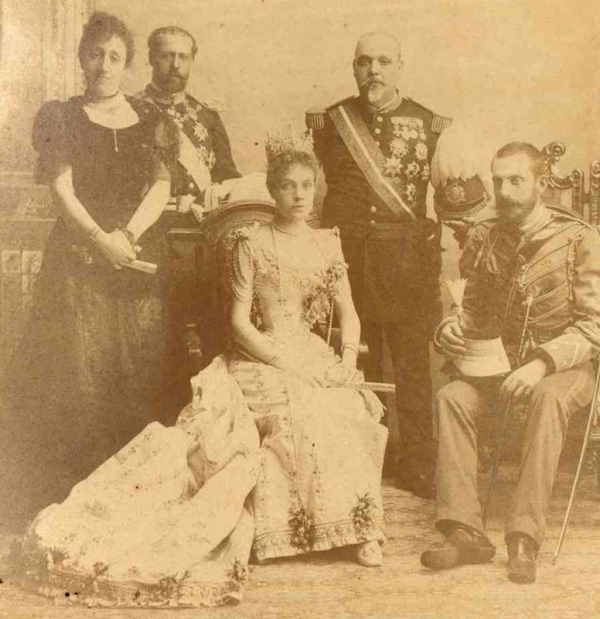 |
| Eulalia wears the tiara in a family portrait taken around the time of her wedding. Also pictured are her husband, Antonio (seated), as well as her mother-in-law; the two men may be her father, the Duke of Cadiz, and her father-in-law, the Duke of Montpensier |
The marriage date was set for February 1886, even though the court was still in mourning for the late king. Eulalia didn’t cope well, contracting diphtheria, which caused the wedding to be briefly postponed. She was still weak when she and Antonio were married, “with all the company dressed in deep mourning, and the [Royal Chapel] draped in black as for a funeral” on March 6, 1886.
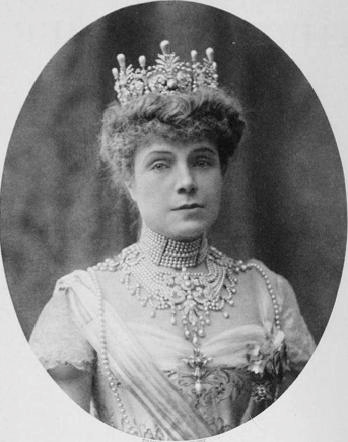 |
| Eulalia wears the tiara with another wedding present: a matching pearl and diamond necklace, a gift from her new parents-in-law, who were also her aunt and uncle |
The marriage ceremony may have been funereal, but Eulalia received a treasure trove of glittering wedding presents. This diamond and pearl tiara was her gift from her sister-in-law, Queen Maria Cristina, wife of the late King Alfonso XII. (Maria Cristina was Spain’s Queen Regent from the time of her husband’s death until her son reached the age of majority.) The tiara, which features anthemion and scroll motifs, was reportedly made by a Spanish jeweler. Ursula identifies the maker as “Del Mazo.”. She also notes that the tiara “was made of 1422 diamonds of various sizes, 68 pearls and 7 big pear-shaped pearls,” and that it was displayed in the firm’s shop in Madrid shortly after the royal wedding.
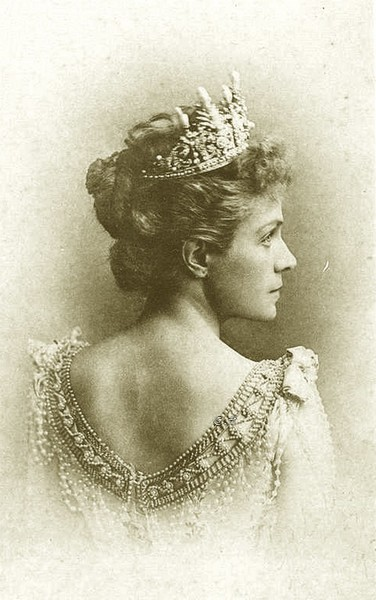 |
| Eulalia wears the tiara in a profile portrait |
Eulalia clearly liked this tiara, posing with it in numerous portraits after her wedding, even though it was reportedly painfully heavy to wear. She apparently liked it quite a bit more than she liked marriage or, indeed, the constraints of royal life. Although she and Antonio had two children who survived to adulthood, their marriage seemed doomed from the start. After a controversial trip to the United States, which included a stop at the 1893 World’s Fair in Chicago, the two separated. They made the separation legal in 1901 but never divorced.
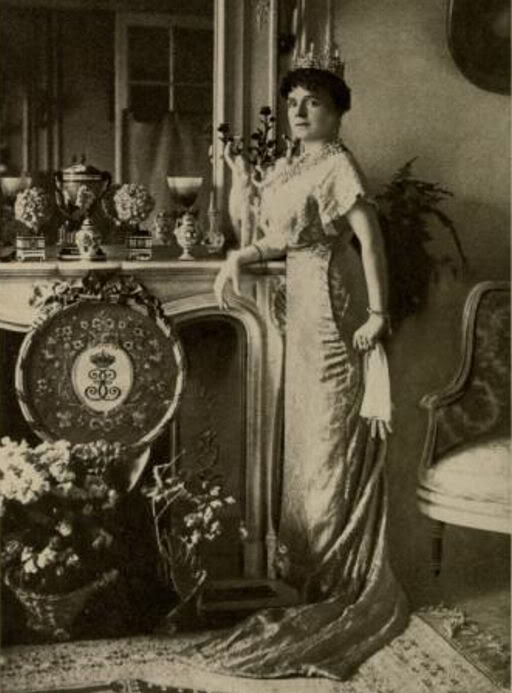 |
| Portrait of Eulalia included in her second book, Court Life from Within, published in 1915 |
Antonio wandered aimlessly through the rest of his life, squandering his money and squiring a series of mistresses; but although she was often impoverished, Eulalia relished her independence. She began to write, much to the chagrin of her nephew, King Alfonso XIII. She held “democratic” opinions about royalty, believing that much of royal life was pointless pageantry. Her first book, The Thread of Life, focused on her liberal viewpoints about government, royalty, equality, and the role of women. King Alfonso reportedly sent a telegraph to his aunt, asking that she suspend the book’s publication until he had a chance to review its content; she refused and published it anyway. In her follow-up book, a memoir called Court Life from Within, a portrait of Eulalia wearing the diamond and pearl tiara was included as a frontispiece. Two more books, another political treatise and another memoir, followed.
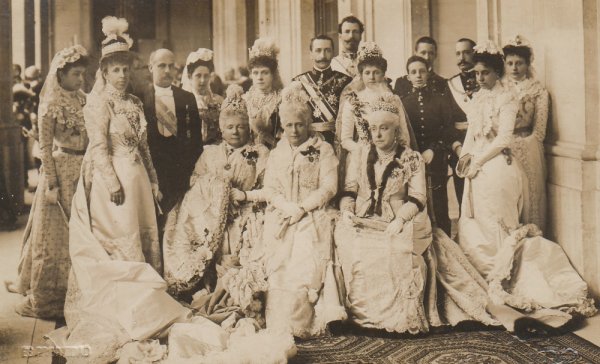 |
| Eulalia (standing 5th from the left) wears the tiara at the 1901 wedding of her niece, Infanta Mercedes, and Prince Carlos of Bourbon-Two Sicilies. Read more about this wedding in our previous post |
By 1931, the Spanish monarchy was on precarious ground once again. King Alfonso XIII was forced into exile, and the country declared itself a republic. The entire royal family, including Eulalia, was forced to flee. Her jewelry collection, left behind in Spain, was stolen. Most pieces, including the diamond and pearl tiara, were sadly never recovered.
Leave a Reply